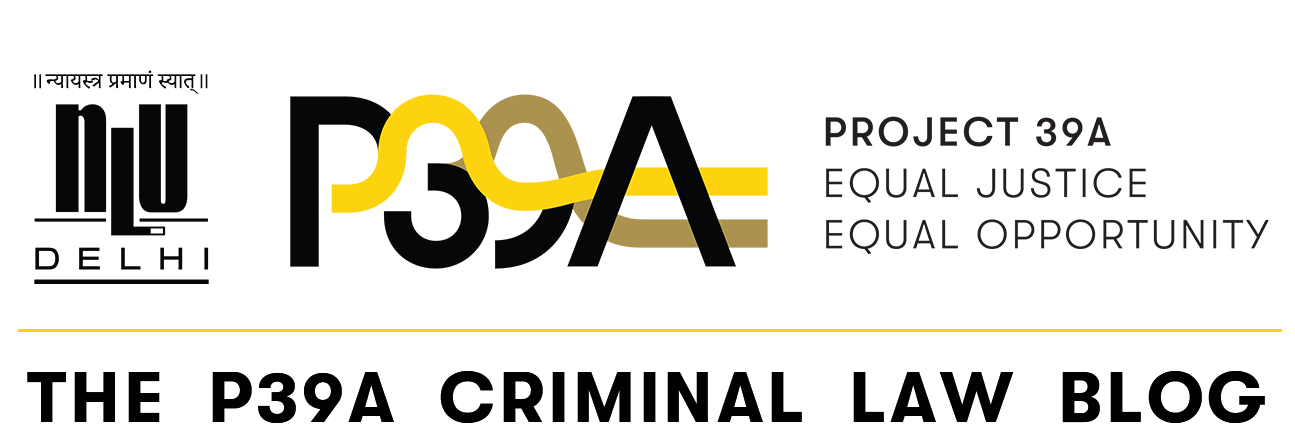
Maitreyi Misra
This article was first published in The Hindustan Times and can be accessed here.
The imagination of legal representation in capital cases is limited to lawyers. Mitigation, however, needs to be conducted by individuals trained in social work, sociology or psychology.
How can the death penalty be imposed fairly? This is the question that the Supreme Court (SC) recently referred to a five-judge Constitution bench. The SC hasn’t stated its interest in answering a related question — can the death penalty be imposed fairly at all — but will have to reckon with it.
In May 1980 (Bachan Singh), while declaring the death penalty constitutional, the SC prescribed a formula for sentencing courts to apply before imposing the death sentence. It mandated that courts inquire into aggravating and mitigating circumstances and then decide whether the option of life imprisonment was “unquestionably foreclosed”. However, subsequent movement on death penalty sentencing law revealed fault lines, on several questions — when should the death penalty be imposed? Who should it be imposed upon? How should it be imposed?
That the accused facing a death sentence should be given a “meaningful”, “real” and “effective” hearing on the question of the sentence is well established. However, the content of these words needs contouring and is the Court’s aim in this reference. It will require instituting a process that can ensure a fair hearing — a process (both in its substantive and procedural aspects) that satisfies the constitutional requirements of “due process”.
The role of the accused in a sentencing hearing is to present information suggesting why they should not be sentenced to death. Some mitigating circumstances include age, socio-economic factors, family dependents, trauma, and history of violence and neglect. These help courts understand the accused’s worldview, barriers and how they navigated their lives. These domains speak to crucial aspects of the question at the heart of death penalty sentencing — is a person sufficiently blameworthy to be given the death sentence?
But these mitigating circumstances are often not even presented in trial courts. The vulnerable and marginalised, overwhelmingly represented among death row prisoners, often don’t have access to effective legal representation. If mitigation information is presented, it is often merely listed, with each item placed individually and considered distinctly. The contextualisation exercise is absent. The accused are barely given time to present such information. As the law stands, an accused could well be sentenced to death on the same day they are found guilty. The system has legitimised practices that prevent a meaningful presentation of mitigation. Even though information such as the experience of trauma, violence or neglect are now considered relevant, in the absence of sufficient time, this information will rarely ever be produced meaningfully, if at all. Mitigation requires understanding the interplay of social, environmental, and psychological factors and their impact on an individual. It requires time, resources and skills that lawyers are not trained in.
The imagination of legal representation in capital cases is limited to lawyers. Mitigation, however, needs to be conducted by individuals trained in social work, sociology or psychology. The system does not afford the accused any of this. Instead, it often considers mitigation as “unrealistic, unwarranted and rather not upholding the rule of law” (Manoj Pratap Singh, 2022). Death penalty sentencing will, by default, remain a perfunctory exercise. At its core, a fair sentencing hearing requires enormous work in bringing the intricacies of human life to the fore.
But a system which doesn’t have the resources to ensure fair outcomes in each case, can never impose death fairly. Ensuring that the death penalty is imposed fairly is a step that comes after instances of unfairness have been inflicted on the accused. In a system where resolutions are passed against representing an accused, where torture is rampant, where there are serious concerns with the quality of legal representation, the issue of fairness is not one of sentencing. On Wednesday, the SC acquitted a prisoner, Chotkau, who spent eight years with the agony of uncertain death. This must give us some pause. A system where two judicial stages couldn’t catch on to questions of innocence, cannot consider itself fit to impose a sentence of death. Fairness is fundamentally incompatible with disregard for the accused ingrained through the system. Fairness rejects countervailing considerations of resource and capacity limitations that the justice system faces. The system needs to be made better, not for the death penalty, but for justice to be done.
Maitreyi Misra heads the Death Penalty Mitigation Team at Project 39A, National Law University Delhi. Project 39A was involved in the proceedings that resulted in this reference.






[…] Death Penalty: How to Ensure Fair Sentencing […]